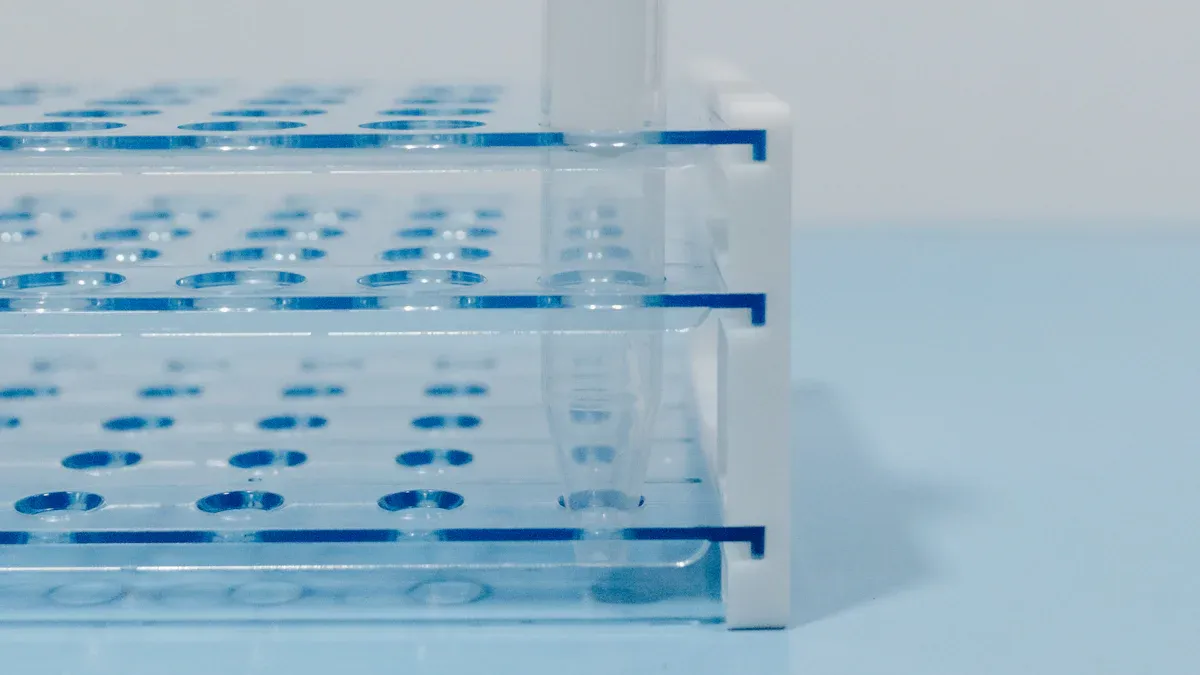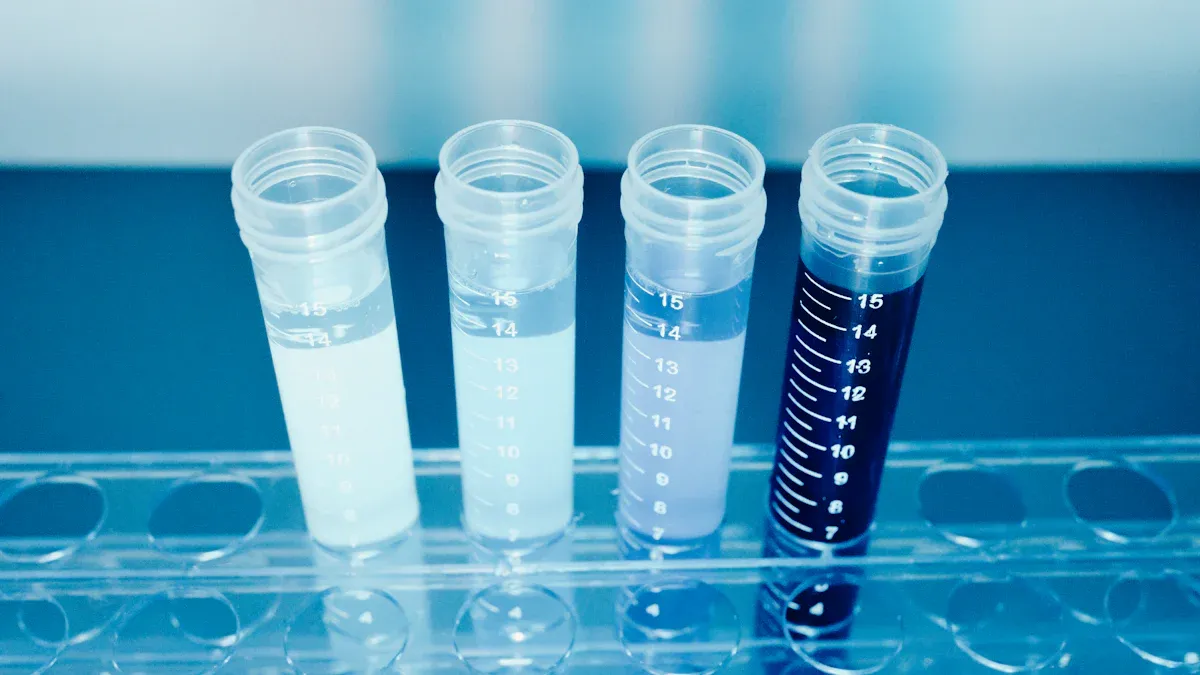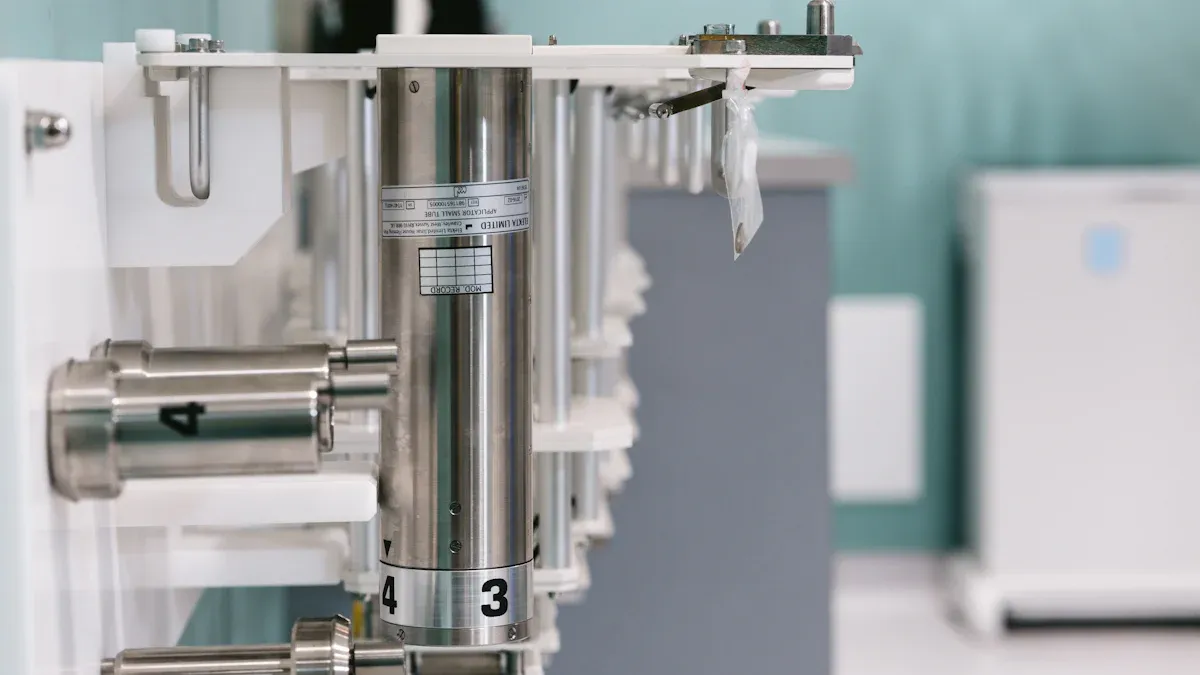Understanding the Role of Nitinol Alloy Tubing in Neurovascular Thrombectomy Devices

A new generation of neurovascular thrombectomy devices relies on nitinol alloy tubing for safe and effective clot removal. Doctors face many challenges when retrieving blood clots from the brain, such as tight vessel curves and the risk of vessel injury. The choice of material matters because nitinol alloy tubing in neurovascular thrombectomy devices can stretch up to 500% without breaking and shows less than 0.5% change in electrical resistance, proving its strength and stability.
Aspect | Numerical Data / Result | Clinical Impact |
|---|---|---|
Radial Stretching Capacity | 400-500% | Tolerates extreme deformation during deployment |
Clinical Occlusion Rate | 76% | High success in aneurysm treatment |
Morbidity and Mortality | 5% morbidity, 4% mortality | Low complication rates |
Studies show that nitinol alloy tubing in neurovascular thrombectomy devices improves first-pass reperfusion and reduces complications compared to other materials. Recent clinical trials with devices made from nitinol have helped more patients recover after stroke and have set new standards for safety and performance.
Key Takeaways
Nitinol alloy tubing bends, stretches, and returns to its original shape, making it ideal for safely removing blood clots in the brain.
Its superelasticity and shape memory help devices navigate tight, curved blood vessels without causing damage.
Nitinol tubing is biocompatible and resists fatigue, allowing devices to last longer and reduce complications during procedures.
Compared to stainless steel and polymers, nitinol offers better flexibility, safety during MRI scans, and durability.
Advances in nitinol processing enable customized, safer devices that improve patient recovery and treatment success.
Nitinol Alloy Tubing in Neurovascular Thrombectomy Devices

Nitinol alloy tubing in neurovascular thrombectomy devices plays a vital role in modern stroke treatment. This tubing is a small, flexible tube made from a special metal blend of nickel and titanium. Engineers use nitinol alloy tubing because it can bend, stretch, and return to its original shape. These features help doctors reach and remove blood clots from the brain safely and effectively. Nitinol tubing stands out because it combines strength, flexibility, and safety, which are all essential for devices that travel through delicate blood vessels.
Nitinol Alloy Properties
Nitinol alloy tubing has unique properties that make it ideal for neurovascular thrombectomy devices. The tubing shows non-linear mechanical behavior, which means it can handle large amounts of stress without breaking. Material property studies use uniaxial tension tests to measure how the tubing reacts under force. These tests show that nitinol alloy tubing can stretch up to 500% and still return to its original shape. The chemical makeup and microstructure of the alloy also play a big part in its performance. Tubing manufacturers use special heat treatments and surface finishing to improve these properties. Finite element analysis helps scientists predict how nitinol tubing will behave during real-life use. This combination of testing and modeling ensures that nitinol alloy tubing meets the strict demands of neurovascular thrombectomy devices.
Superelasticity and Shape Memory
Superelasticity and shape memory are two of the most important features of nitinol alloy tubing. Superelasticity means the tubing can bend and twist through tight curves in blood vessels and then snap back to its original form. Shape memory allows the tubing to "remember" its shape even after being deformed. Experimental tests on thin-walled nitinol tubes show that the tubing can recover almost completely after being stretched or twisted. The stress-strain curves from these tests reveal that the tubing undergoes a special phase transformation inside the metal. This transformation lets the tubing handle both tension and torsion without permanent damage. Heat treatments can adjust the temperature at which these changes happen, giving device makers control over the tubing's behavior. These properties are critical for devices that must move through complex vessel paths and then expand or contract as needed.
Biocompatibility and Fatigue Resistance
Nitinol alloy tubing must be safe for long-term use in the human body. Biocompatibility tests follow strict standards, such as ISO 10993 and ASTM F2063, to check for any harmful reactions. These tests include checks for cytotoxicity, irritation, and systemic toxicity. Clinical studies show that nitinol tubing causes very few adverse reactions, even after more than ten years inside the body. Fatigue resistance is another key feature. Nitinol tubing can handle millions of cycles of bending and stretching without failing. Advanced testing methods, like digital image correlation and cyclic fatigue protocols, measure how the tubing performs under real-life conditions. For example, shape recovery strain reaches 4.16%, and superelastic strain goes up to 7%. These numbers show that nitinol tubing can recover its shape and survive repeated use. Clinical data from nitinol alloy stents report primary patency rates as high as 98.6% in some patient groups, with low rates of major adverse events. This performance supports the use of nitinol alloy tubing in neurovascular thrombectomy devices and other medical implants.
Note: Nitinol alloy tubing in neurovascular thrombectomy devices combines advanced material science with proven clinical safety. Its unique properties help doctors treat patients more effectively and with fewer complications.
Device Design and Performance
Navigating Complex Vessels
Neurovascular thrombectomy devices must travel through winding and narrow blood vessels to reach a clot. Nitinol tubing helps these devices move smoothly through complex vascular anatomy. The superelasticity of nitinol allows the tubing to bend and recover its shape, even after passing through tight curves. This property prevents permanent kinking and keeps the device working as intended. Engineers design the tubing with special tip shapes and surface finishes to reduce friction and improve steerability. These features help doctors guide the devices through challenging vascular pathways with confidence.
Design Performance Metric | Demonstrated Benefit for Navigation |
|---|---|
Superelasticity | Enables devices to recover shape after deformation, allowing smooth navigation through tortuous vessels. |
Flexibility | Allows guidewires and catheters to conform to vessel contours, reducing trauma and improving maneuverability. |
Fatigue Resistance | Ensures durability under repeated stress during navigation and deployment. |
Biocompatibility | Minimizes adverse tissue reactions for safe long-term use. |
Clinical Outcomes | Higher procedural success rates reflect improved navigation and device performance. |
Precision and Flexibility
Nitinol tubing gives neurovascular devices both precision and flexibility. The tubing can stretch and compress without losing its strength, thanks to its tensile strength of 500 to 900 MPa. This strength, combined with tight manufacturing tolerances, ensures that the devices fit perfectly inside the vascular system. Clinical trials, such as the DAWN trial, show that patients treated with nitinol-based devices have better outcomes, with 49% achieving functional independence at 90 days compared to 13% with standard care. The flexibility of nitinol tubing allows it to adapt to the natural curves of blood vessels, making it easier for doctors to control the device and reach the target area safely.
Studies show that nitinol tubing supports healthy cell growth and does not cause harmful reactions. This biocompatibility, along with its mechanical flexibility, makes nitinol tubing a top choice for neurovascular procedures.
Minimizing Vessel Trauma
Minimizing vessel trauma is critical during neurovascular interventions. Nitinol tubing helps by exerting a gentle, constant force on vessel walls. Its superelasticity allows the tubing to recover its shape after deformation, reducing the risk of vessel injury. Clinical data reveal a 98% success rate in procedures using nitinol tubing, with a 12% reduction in complications compared to traditional materials. The tubing’s ability to recover up to 96% of its shape after repeated use ensures consistent performance and less stress on the vascular system. Surface treatments, such as electropolishing, further reduce friction and promote healing, making nitinol tubing safer for patients.
Clinical Impact of Nitinol Tubing
Patient Safety
Nitinol tubing has transformed patient safety in vascular interventions. Doctors use nitinol in procedures like aneurysm embolization and cerebral aneurysm repair because it lowers the risk of complications. Clinical studies show that nitinol implants cause 30% fewer rejection cases than traditional metals. The tubing’s superelasticity and shape memory help reduce tissue trauma during interventions, which means less pain and faster recovery for patients. Surface treatments, such as electropolishing, make nitinol even safer by lowering clotting risks and supporting healthy tissue growth. The table below highlights key safety improvements:
Comparative Study / Metric | Key Findings Supporting Safety Enhancements |
|---|---|
Lichtenberg et al. (2014) | Improved vessel patency in arteries treated with nitinol stents, showing better long-term safety. |
Sakamoto et al. (2013) | Positive long-term outcomes in chronic total occlusion cases using nitinol. |
Surface Treatments | Advanced coatings reduce nickel ion release and thrombogenicity, enhancing patient safety. |
Doctors also see fewer allergic reactions and less inflammation after nitinol-based interventions. These features make nitinol tubing a top choice for cerebral vascular treatments and the treatment of cerebral arterial stenosis.
Clinical Outcomes
Nitinol tubing improves outcomes in vascular interventions, especially for aneurysm and arterial stenosis cases. Patients recover 20% faster after procedures using nitinol devices. They also report less pain and lower complication rates. The following table compares nitinol devices with traditional materials:
Metric | Nitinol Devices | Traditional Materials |
|---|---|---|
Recovery Improvement | 20% faster recovery | N/A |
Pain Level Reduction | Quicker recovery | N/A |
Risk of Complications | Lower | N/A |
Doctors use nitinol coils for aneurysm embolization and endovascular embolization, which helps maintain vessel patency and reduces the risk of restenosis. Nitinol’s flexibility allows smoother navigation through vascular pathways, lowering tissue damage and improving patient outcomes. In arterial stenosis and other vascular interventions, nitinol stents show high patency rates and fewer repeat procedures.
Smaller incisions, better biocompatibility, and strong fatigue resistance all contribute to faster healing and improved patient comfort.
Customization and Innovation
Recent advancements in nitinol processing have led to more customized devices for vascular interventions. Manufacturers use new alloy blends, laser cutting, and special coatings to improve mechanical properties and device lifespan. Doctors can now choose nitinol devices that respond to body temperature and pressure, making them ideal for complex aneurysm and stenosis cases. Self-expanding nitinol stents provide uniform force, which helps in precise placement during interventions for arterial stenosis.
Innovations include:
Drug-eluting and bioabsorbable nitinol devices for expanded therapeutic effects.
FDA-cleared systems, such as Medline UNITE’s REFLEX HYBRID Nitinol Implant System, show clinical validation.
Adoption of nitinol-based coils and stents in vascular interventions, including aneurysm and embolization procedures.
Surface processing techniques also reduce nickel ion release, which increases safety during long-term use. These innovations support better outcomes and safer interventions for patients with vascular diseases.
Nitinol vs. Other Materials

Stainless Steel Comparison
Stainless steel has served as a common material for medical devices for many years. It offers good strength and durability. However, stainless steel can be ferromagnetic, which means it may react to magnetic fields during MRI scans. This reaction can cause movement or heating of the device, making it less safe for patients who need MRI imaging. Nitinol alloy does not have this problem because it is non-ferromagnetic. This property makes nitinol alloy safer for use in neurovascular thrombectomy devices, especially when doctors need to use MRI.
Metric | Stainless Steel (316L) | FeMnN Alloy (Fe-Mn-N) |
|---|---|---|
Yield Strength | Comparable to FeMnN alloy | Comparable to 316L stainless steel |
Elastic Modulus | Comparable to FeMnN alloy | Comparable to 316L stainless steel |
Crystal Structure | Austenitic (ferromagnetic) | Austenitic (non-ferromagnetic) |
MRI Compatibility | Limited due to ferromagnetism | High due to non-ferromagnetic nature |
Doctors also find that nitinol alloy tubing bends and returns to shape better than stainless steel. This flexibility helps the devices move through the brain’s tiny blood vessels without causing damage.
Polymers and Alternatives
Some devices use polymers or plastic materials. Polymers can be flexible and lightweight. They do not react to magnetic fields, so they are safe for MRI. However, polymers do not have the same strength or fatigue resistance as metals. Over time, polymers may crack or wear out, especially in devices that need to bend and move often. Nitinol alloy tubing lasts longer because it can handle millions of bends without breaking. This durability is important for devices that doctors use in delicate neurovascular procedures.
Advantages of Nitinol Alloy
Nitinol alloy offers several key advantages over other materials:
Non-ferromagnetic, so it is safe for MRI procedures.
Superelastic, allowing devices to bend and return to shape easily.
High fatigue resistance, which means devices last longer.
Excellent biocompatibility, reducing the risk of allergic reactions.
Doctors choose nitinol alloy for neurovascular thrombectomy devices because it combines safety, flexibility, and long-term performance. These features help improve patient outcomes and make procedures safer.
Nitinol alloy tubing gives neurovascular thrombectomy devices the ability to bend, stretch, and return to shape inside the brain’s tiny vessels. Its superelasticity and shape memory help doctors treat complex cases and improve patient outcomes. Recent advances focus on making nitinol even purer and stronger by reducing tiny inclusions in the metal.
Smaller inclusions mean devices last longer and work better during repeated use.
New testing methods help ensure safety and durability.
Material science continues to shape the future of neurovascular care.
FAQ
What is nitinol alloy tubing?
Nitinol alloy tubing is a small tube made from nickel and titanium. Engineers use it in medical devices because it bends easily and returns to its original shape. Doctors trust it for treating blood clots in the brain.
Why do doctors prefer nitinol over stainless steel?
Doctors choose nitinol because it bends without breaking and does not react to MRI machines. Stainless steel can be stiff and may move during MRI scans. Nitinol also causes fewer allergic reactions.
How does nitinol tubing improve patient safety?
Nitinol tubing reduces the risk of vessel injury. Its smooth surface and flexibility help doctors move devices safely through blood vessels. Patients often heal faster and experience fewer complications after procedures with nitinol devices.
Can nitinol tubing be customized for different patients?
Manufacturers can adjust nitinol’s shape and size for each device. They use special heat treatments and coatings. This customization helps doctors treat many types of blood vessel problems.

